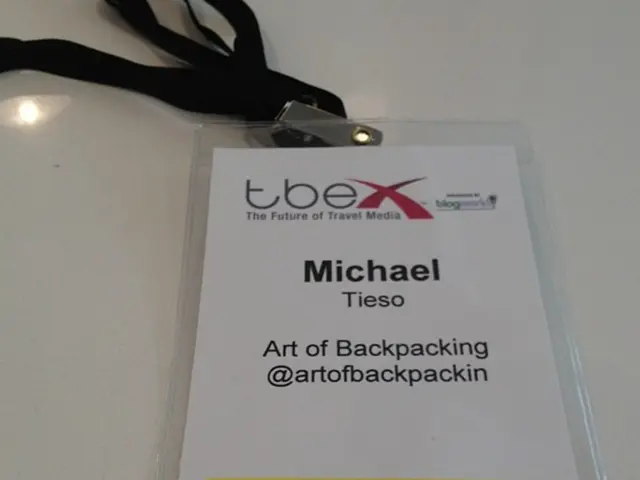In the year 2025, intense labor shortages compel businesses to re-strategize their recruitment approaches.
In today's fast-paced business landscape, companies are adapting to the evolving job market by implementing strategic approaches to bridge the skills gap. These strategies, designed to align skill development with business objectives, are proving to be instrumental in addressing the mismatch between workers' skills and employers' needs.
One of the key strategies is aligning skills with business objectives. Companies first assess and prioritize the most critical skill gaps based on their impact on revenue, innovation, operational risks, and cost of delay. This prioritization ensures investment in areas with the highest return, such as cybersecurity, data science, and automation engineering.
Firms are also embracing balanced talent strategies, which include internal reskilling, upskilling, and strategic external hiring. For example, Amazon's $1.2 billion investment to upskill 300,000 employees underscores this blended approach.
Skills-based hiring is another strategic approach that is gaining traction, especially in sectors like education and government. Companies and public institutions are increasingly focusing on practical, job-relevant skills when recruiting, helping to broaden the talent pool and fill shortages in specialized fields.
Developing a development-focused workplace culture is another essential component of these strategies. Organizations are performing skills gap analyses that include evaluating both technical and soft skills and identifying culture and access barriers. Initiatives such as stretch assignments, mentorship programs, redesigned career paths, and equity reviews promote inclusive employee development.
Third-party staffing and workforce planning are also becoming increasingly valuable. Modern staffing firms now provide end-to-end training and development programs, enabling accelerated hiring via pre-qualified candidates, and using data-driven analytics to forecast future skill needs.
These strategies are evolving, with a growing emphasis on skills-first hiring over traditional credentials, particularly in public sectors and critical shortage fields. Upskilling and reskilling initiatives are also being combined with technology-enabled, personalized learning paths and closer alignment with business strategy to ensure agility and relevance.
Remote work capabilities are allowing companies to recruit talent from anywhere, expanding their candidate pool. Companies measure the success of these programs through improved retention rates, higher internal promotion numbers, and increased employee satisfaction scores. The return on investment often exceeds the cost of external recruitment when factoring in reduced turnover and faster productivity gains.
Micro-learning platforms deliver bite-sized lessons that employees can complete during breaks or between meetings. Skills-based hiring has become the new standard, with practical assessments, coding challenges, and real-world problem-solving exercises being used to test candidates.
This hybrid approach offers advantages such as cost savings, risk reduction, and flexibility to scale teams based on business needs. Looking toward the future, success in the evolving job market requires abandoning outdated assumptions about qualifications and embracing diverse pathways to expertise.
Sources: [1] McKinsey & Company. (2021). Reskilling at scale: A framework for effective workforce transformation. [2] World Economic Forum. (2020). The Future of Jobs Report 2020. [3] Deloitte. (2020). The skills gap: What it is and how to bridge it. [4] Gartner. (2021). The future of work: The rise of the agile workforce.
- In today's business landscape, the focus on health and wellness has become crucial for employees as companies recognize the link between employee well-being and productivity.
- The growing need for career advancement has led to a rise in education and self-development opportunities, with many companies offering learning and development programs.
- As companies adapt to the evolving job market, businesses in the manufacturing industry are showing increased interest in technology integration to streamline processes and improve efficiency.
- The importance of environmental conservation has gained recognition in the business world, with many companies incorporating sustainability practices into their operations.
- The growing trend of data-driven decision-making has led to an increased demand for data scientists in various industries, especially finance, retail, and cybersecurity.
- The demand for medical professionals trained to handle chronic diseases such as type-2 diabetes has led to a surge in investment in medical education and training programs.
- The rise of automotive technology has created new job opportunities in the automotive industry, with a focus on designing self-driving cars and improving electric vehicle technology.
- In the political arena, policy and legislation are being enacted to address the skills gap, with investments in vocational training and apprenticeship programs.
- Investing in stocks and other financial instruments remains a key part of personal-finance management, with many individuals relying on banking and insurance services for secure investments.
- The proliferation of Fintech has disrupted the traditional banking industry, with technology playing a significant role in simplifying and personalizing financial services.
- The rise of artificial intelligence has opened up new possibilities for the business world, with industries like healthcare and transportation leveraging AI to improve processes and services.
- The job-search process has become streamlined with the advent of technology, with many companies using online platforms and algorithms to find the best candidates.
- The news media is an integral part of the general public's understanding of current events and policy decisions, with a focus on reporting on issues such as skills training and employment opportunities.
- The success of these strategies hinges on close collaboration between businesses, government, and educational institutions, with ongoing communication ensuring the alignment of skills development with business objectives.
- Companies are investing in transportation infrastructure to improve the efficiency of their supply chains, with a focus on reducing costs and improving delivery times.
- The field of science continues to evolve, with research and development being conducted in areas such as cloud computing, machine learning, and quantum computing, with the potential to revolutionize various industries.




